Seat Belt and Airbag Injuries Lawyer in Michigan

It’s no secret that seat belts and airbags save lives. When an accident occurs, they are designed to help protect those inside the car from experiencing the full force of the collision. The National Highway Traffic Safety Administration reports that seat belt use lowers the risk of death for front-seat passenger car occupants by 45%. They also found that airbags saved the lives of over 50,000 vehicle occupants between 1987 and 2017.
When drivers or passengers are in a car accident, they can experience a great deal of bodily harm. Even in a minor crash, they can experience pain and injury. Seat belts and airbags are designed to decrease the severity of injuries in car crashes, but when they fail, they leave occupants completely unprotected. If you or someone you love has been injured by a faulty airbag or seatbelt, the Michigan product liability attorneys at Lipton Law can help you fight for compensation. Contact our law firm today by calling (248) 557-1688 to receive a free case evaluation.
What to Do if You Suffer Seat Belt or Airbag Injuries in an Accident
Seat belt and airbag failure can cause the back seat and front seat passengers to sustain injuries in a car crash. Regardless of the cause, if someone has suffered injuries in a vehicle collision, the first thing they should do is seek medical treatment. If the accident involves more than one vehicle, exchange information with the other drivers involved and contact local law enforcement to file a police report.
In order to receive compensation, you have to prove the vehicle’s manufacturers were somehow negligent, and in order to prove manufacturer negligence, you would need evidence. This can include pictures of the broken seat belt or airbag, as well as eyewitness accounts from the other occupants of the vehicle stating the seat belt or airbag malfunctioned. Be sure to take pictures of the broken seat belt or airbag after the crash.
You should also call a law firm that specializes in liability cases regarding faulty, defective, or misleading products. They can help you file a claim and receive compensation from the manufacturer or other negligent party responsible for the malfunction. Additionally, if you were in a car crash that was caused by a negligent driver, you may want to call an experienced Southfield car accident lawyer to help you file a personal injury claim.
Seat Belt Failure Lawsuit
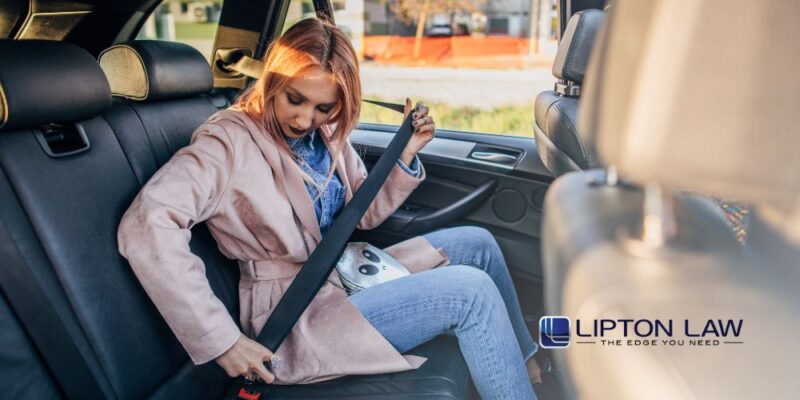
Seat belts and airbags are designed to protect vehicle occupants from harm, so when they do the exact opposite, someone should be held responsible. Seat belt failure cases ensure that a negligent car manufacturer is held liable for any damages caused by a faulty seat belt or airbag. An experienced product liability lawyer can help victims file a claim or lawsuit against any negligent party involved in the designing, manufacturing, and selling of a vehicle.
How Do Seat Belts Work?
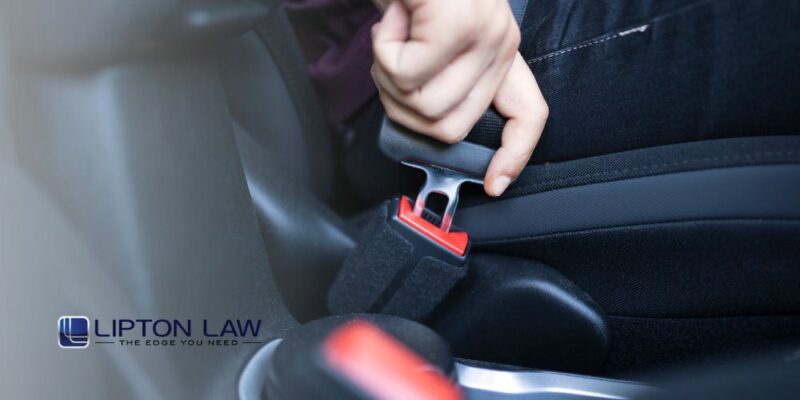
Seat belts are designed to restrain drivers and passengers to their seats in the event of a crash. This protects them from striking hard surfaces inside the car, like the windshield or dashboard. Seat belts can also protect an occupant from being ejected from the car in the event of a severe accident, such as a rollover accident.
Standard seat belts include a lap belt portion, which goes across the lap, and a shoulder belt portion, which goes across the chest. It also consists of webbing, which is the material the belt itself is made out of. The seat belt tongue is the movable part of the belt that gets secured to the buckle. The buckle is what keeps the seat belt attached to the seat of the car.
Seat belt systems include a retractor and locking mechanism. The retractor keeps the seat belt out of the way when it’s not in use. It also holds a slight bit of tension on the seat belt when it is in use, to make sure it fits snugly. This mechanism locks the seat belt in place in the event of a sudden stop, keeping the wearer from being thrown forward.
While standard seat belts often protect adults from injury, they are not designed to protect small children from injury. That’s why all children under a certain age should be in a car seat or booster seat designed to restrain and protect a child their size.
Types of Seat Belt Defects
A seat belt failure can occur in a variety of ways and can cause severe injuries to the vehicle’s occupants in the event of a car crash. Defects in the car’s locking mechanism or retractor can cause retractor failure. This is when the retractor fails to lock in place when the car suddenly stops. This can cause the seat belt wearer to lurch forward and hit the steering wheel or dashboard of their car.
Other seat belt defects can involve the latch mechanism. When a seatbelt is buckled, it usually makes a clicking sound, which indicates that the latch mechanism is holding the seat belt tongue in place. False latching occurs when the seat belt is not properly latched, but makes a clicking sound or otherwise appears to be latched. Another latch mechanism defect is inertial unlatching, which is when a large amount of force causes a seat belt to come unlatched. If the seat belt becomes unlatched, or was never truly latched to begin with, the seat belt would be rendered useless and would not protect the wearer in an accident.
A seat belt malfunction can also occur if the seat belt’s webbing is poorly made or not designed to withstand the force of a collision. If you or a loved one has experienced injuries from any of the above-listed seat belt defects, call Lipton Law. Our Michigan law firm is here to help residents receive the financial compensation they deserve.
Injuries from Defective Seat Belts

Seat belt failures can cause mild, moderate, and severe bodily harm to vehicle occupants, and the resulting damages can include life-altering and sometimes fatal injuries. Some of the most common injuries from seat belt failure include:
- Broken bones
- Bruising or contusions
- Neck injuries like whiplash
- Head injuries, including traumatic brain injury
- Spinal cord injuries
- Strangulation
Seat Belt Syndrome
When wearing a seat belt, you are usually at a lower risk for injury, but sometimes, the seat belt itself can cause injuries. Seat belt syndrome is when the seat belt wearer experiences chest injuries as a result of pressure from the seat belt holding the passenger or driver in place. Lap belts can compress the wearer’s abdominal organs, causing internal injuries. Additionally, chest belts can apply a lot of force to the wearer’s chest and sternum, causing chest injuries like bruising or broken ribs.
Seat belt syndrome symptoms may not manifest immediately, so it’s important to look for the signs and symptoms of seat belt syndrome in the days, weeks, and months following the accident. If you experience any of the below symptoms after a car accident, seek medical treatment as soon as possible. Some common symptoms include:
- Abdominal pain
- Chest and abdominal bruising
- Swelling
- Skin discoloration
- Leg weakness
- Blood in urine or stool
- Changes in bowel movements and urination
- Difficulty breathing
- Coughing blood
Airbag Malfunction Lawsuit
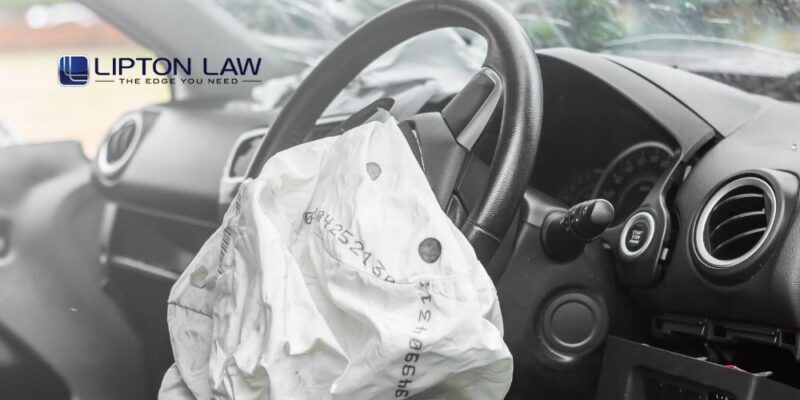
Just like seat belts, when they work properly, airbags are designed to protect a person’s body in the event of a crash. Airbag malfunctions could cause severe personal injury to vehicle occupants in a variety of ways. If you or someone you love has sustained serious injury as a result of a faulty airbag, you may be entitled to compensation.
How Do Airbags Work?
Airbag deployment relies on a few parts: the crash sensor, the inflation system, and the airbag itself. The crash sensor detects when the car experiences a certain level of force, and triggers the airbags to deploy. The crash sensor then ignites a small amount of solid propellant, which burns very quickly and produces enough gas to fill the airbag.
The airbags themselves are made of a light fabric that can easily be folded up and stored inside the steering wheel or other parts of the vehicle. After being inflated, small holes in the airbags allow the gas to escape slowly, causing them to deflate on their own.
Airbags are designed to slow a vehicle occupant’s forward motion and prevent them from hitting parts of the car in front of them. While all cars have an airbag inside the steering wheel to protect the driver from harm, some cars have side airbags. These can protect occupants on the passenger side and in other parts of the car from being thrown into the doors and side walls of the vehicle.
Types of Airbag Defects
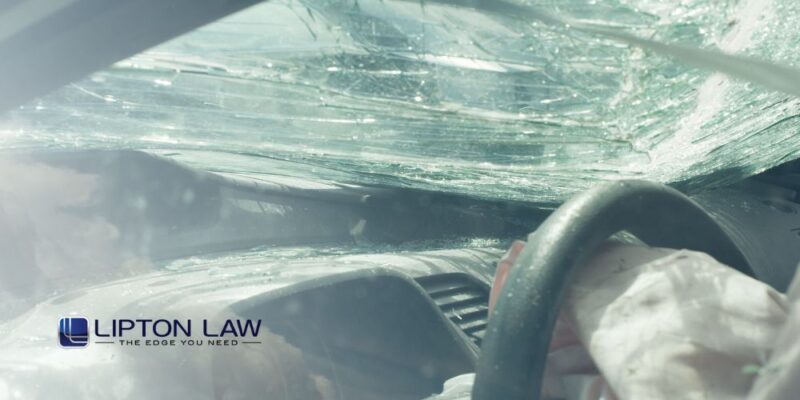
There are several things that can cause airbag failure. For example, if the crash sensor malfunctions, it could make the airbags deploy either too late or at the wrong time. If the airbag deploys even a few fractions of a second late, it could cause someone to strike the hard surfaces inside the car at full force.
Another way an airbag could cause harm is through the propellant and the gas emitted by the propellant. The propellant could launch shrapnel at high speeds, which could then strike the people inside the car. The gas from the airbag deployment could also trigger someone to experience respiratory issues or exacerbate any preexisting conditions.
Defective design could also render airbags useless. During the summer and winter months, our cars can experience extreme temperatures. If the airbag and its components cannot withstand different weather conditions, it could malfunction upon deployment. Additionally, if the vehicle manufacturer does not install the airbag properly, it could cause vehicle occupants to experience serious harm.
Defective Airbag Injuries
Airbag malfunctions can cause various injuries, including internal and external injuries. The airbag propellant can cause burns to the hands, arms, chest, face, and upper thighs during airbag deployment. The propellant can also launch shrapnel at the vehicle occupants, causing lacerations, bruising, and even temporary or permanent blindness, if the shrapnel hits someone in the eye. If the airbag fails to deploy, other injuries can include:
- Bruises
- Lacerations
- Broken bones
- Facial injuries, including injuries to the nose, ears, and eyes
- Neck injuries
- Head injuries, including traumatic brain injuries
- Spinal cord injuries
- Wrongful death
What Are My Rights After Seat Belt or Airbag Injuries?
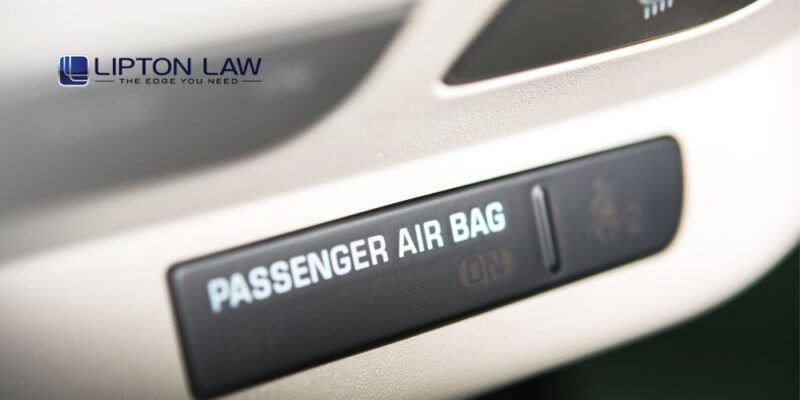
If you experienced personal injury as a result of a faulty airbag or seatbelt, you are entitled to file a product liability claim against the vehicle’s manufacturer for the damages caused. If your claim is approved, you may receive partial or total compensation for things like medical expenses, lost wages, and pain and suffering due to your injuries.
If your claim is denied, you may want to review your other options, like filing a lawsuit. A law firm that specializes in defective product lawsuits can help you understand your rights and inform you on how to best pursue damages. If you have questions on your rights regarding seat belt or airbag injuries, call Lipton Law at (248) 557-1688.
Can I Sue for Seat Belt or Airbag Injuries?

Yes, if your vehicle’s airbags or seat belts fail to function properly, you can file a lawsuit to obtain compensation for any injuries sustained due to the defective product. Sometimes, when multiple vehicles have defective materials like airbags or seatbelts, multiple parties will sue the same motor vehicle manufacturer in a class action lawsuit. Research the seat belt or airbag manufacturer and see if there are any ongoing class action lawsuits regarding their products.
Contact a Michigan Car Accident Lawyer with Lipton Law Today
Car accidents of any kind can be devastating to someone’s physical health. When an airbag or seat belt fails, the person involved in the accident could experience an even greater degree of harm. If your airbag or seat belt failed to protect you in a car accident, the Michigan personal injury lawyers at Lipton Law are here to help. We are prepared to gather evidence, prove negligence, and help you recover compensation for your injuries. Call us or contact us via our website to receive a free consultation regarding your liability case.

